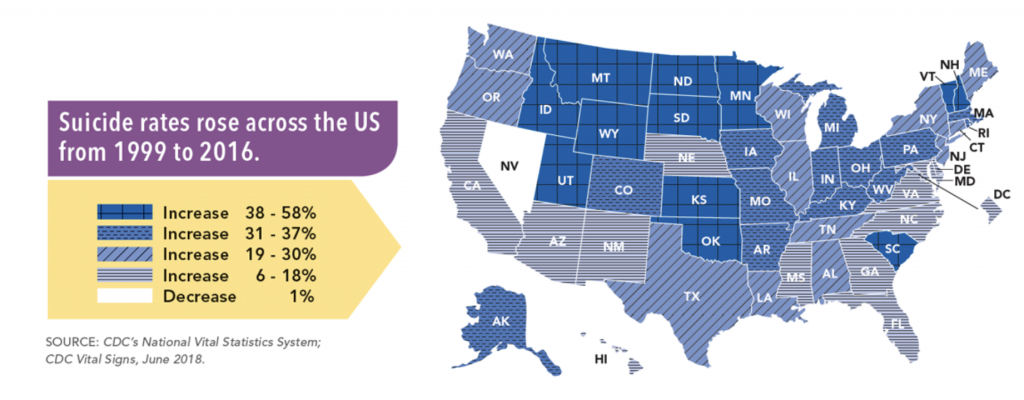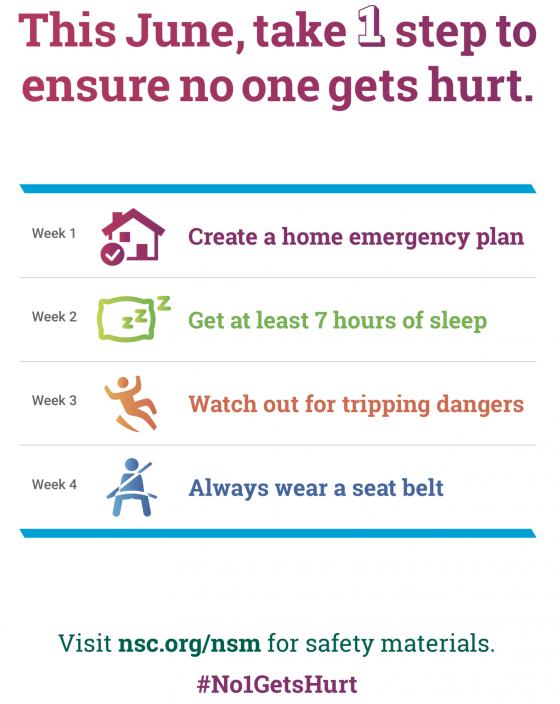 As we’ve seen with the recent Kilauea volcanic eruption and last year’s catastrophic hurricane season, natural disasters are becoming more frequent and dramatically more powerful. In fact, NOAA recently reported that weather and climate disasters reached an all-time high in damage costs within the United States, exceeding $300 billion in 2017.
As we’ve seen with the recent Kilauea volcanic eruption and last year’s catastrophic hurricane season, natural disasters are becoming more frequent and dramatically more powerful. In fact, NOAA recently reported that weather and climate disasters reached an all-time high in damage costs within the United States, exceeding $300 billion in 2017.
In the face of these increases, companies have a social responsibility to maintain a strong disaster recovery strategy. How can your company prepare to combat the risks from these seemingly unpredictable events? Implementing a proactive risk management approach can help companies better prepare themselves, their employees and their communities to minimize damage and loss in the face of these destructive events. But these strategies cannot simply be created when a natural disaster strikes. As with anything, careful planning before a catastrophe happens is vital to the continued health and success of a business.
When developing these strategies, it is imperative that both pre- and post-disaster planning is included in the mix, as each plays a critical role in ensuring your ongoing operations.
Maintain a pre-event strategy
It’s important to remember that when natural disaster strikes, there are both direct and indirect costs to a company. How you plan and address these costs can either save or destroy your business.
With today’s technology, we have the ability to monitor most natural disasters and maintain a better idea of when and how hard they will hit. This isn’t always the case, however. While hurricanes can take time to form before making landfall, oftentimes tornadoes and wildfires happen overnight, making it critical to have disaster plans in place before a disaster strikes.
There are three main areas companies should consider when creating a preemptive disaster strategy: 1) supply chain, 2) employees and 3) business infrastructure.
Maintaining a timely and accurate risk strategy for your company and your employees is incredibly important to protect all of these assets. First, it can help protect your supply chain by providing time to divert your supply chain operations from problem areas.
Additionally, it is imperative to be mindful of conditions affecting your various suppliers and how their potential risks can affect your operations.
Armed with this knowledge, you can proactively develop supply chain diversion strategies to maintain efficiency and production. While you may not have the threat of a natural disaster, one of your largest suppliers might. So think ahead, make a back-up plan and monitor both your own operations and those of your supply chain.
As we all know, employees are central to each and every business. An established risk mitigation strategy will include notifying employees so they have time to protect themselves and their family. It can also help management decide if and when to send employees home to help keep them safe.
Finally, a preemptive strategy needs to consider the effects of disaster on business infrastructure. How will you prepare your building and operations for the threat of a flood or tornado? Do you have access to the proper reinforcements and equipment to accomplish these preparations? A well-established pre-event risk management strategy can help with these issues and also minimize damage so that you are not left picking up the pieces of what could have been a protected building or warehouse.
Implement a proactive post-event strategy
When developing a post-event disaster plan, the best strategy is to think long-term, as short fixes are just that—short fixes.
Consider the upstream impact of the disaster. Damage to raw materials and supplier areas can amount to huge indirect costs. So how can you avoid this? One way is by ensuring your pre-event plan is efficiently put into effect and is able to redirect any necessary supplies. It is also imperative to have a successful remediation strategy in place to recover from the effects of a disaster for both your operations and those of your supply chain. Be prepared to re-establish your supply chain and be sure it is completely intact post-disaster.
Many disasters also have long-lasting impacts that cause companies to have a lengthy rebuilding process. Have a plan for secondary supply chain options to ensure ongoing operations in case a supplier is out of service for a longer period of time. The problems don’t end when the disaster ends, so be sure to build out contingency plans for your operations through the potential recovery months.
Your post-event remediation strategies must also consider your physical office environment. Ensure there is a plan to check that equipment is operational and know how to repair or find replacement equipment to get operations up and running as soon as possible. Focus on rebuilding the business ecosystem from supply chain, to operations, to your employees.
Finally, consider how you will get your employees back to work, and not just for the immediate future. Invest in your employees, and they will invest in you. After natural disasters, your employees could be facing damaged or destroyed homes, the loss of loved ones and even personal injuries.
Look at what the company can do to help ensure their well-being so that they are willing and able to return to work.
Inevitability doesn’t have to mean susceptibility
Regardless of location, natural disasters are going to occur that affect you and your business to some extent. That is a fact of life. But it doesn’t necessarily mean that your company is susceptible to the significant damages and costs associated with these disasters.
Maintaining open lines of communication with your leadership and employees will help you develop and implement a strategic plan before and after nature takes its course. As we face the upcoming hurricane season and other inevitable disasters, it is better to mitigate the risks and susceptibility so that your “in case” plan doesn’t become “we should have.”

 Conversations about suicide in the workplace have been seemingly unavoidable, due to the self-inflicted deaths of apparel icon Kate Spade and Anthony Bourdain, chef, author and “Parts Unknown” host, last week. Employers may use these tragedies to reconsider their own prevention and awareness efforts, and ways they can productively contribute to the dialogue and keep their workers safe.
Conversations about suicide in the workplace have been seemingly unavoidable, due to the self-inflicted deaths of apparel icon Kate Spade and Anthony Bourdain, chef, author and “Parts Unknown” host, last week. Employers may use these tragedies to reconsider their own prevention and awareness efforts, and ways they can productively contribute to the dialogue and keep their workers safe. As we’ve seen with the recent Kilauea volcanic eruption and last year’s catastrophic hurricane season, natural disasters are becoming more frequent and dramatically more powerful. In fact, NOAA recently reported that weather and climate disasters reached an all-time high in damage costs within the United States, exceeding $300 billion in 2017.
As we’ve seen with the recent Kilauea volcanic eruption and last year’s catastrophic hurricane season, natural disasters are becoming more frequent and dramatically more powerful. In fact, NOAA recently reported that weather and climate disasters reached an all-time high in damage costs within the United States, exceeding $300 billion in 2017. “Preventable injuries are the third leading cause of death for the first time in United States history,” NSC president and CEO Debbie Hersman told Risk Management Monitor. “Sadly, our national opioid epidemic and the sudden recent increase in motor vehicle deaths have propelled preventable injuries past chronic lower respiratory disease and stroke in terms of how many lives are lost each year. Every single unintentional injury could have been prevented.”
“Preventable injuries are the third leading cause of death for the first time in United States history,” NSC president and CEO Debbie Hersman told Risk Management Monitor. “Sadly, our national opioid epidemic and the sudden recent increase in motor vehicle deaths have propelled preventable injuries past chronic lower respiratory disease and stroke in terms of how many lives are lost each year. Every single unintentional injury could have been prevented.”